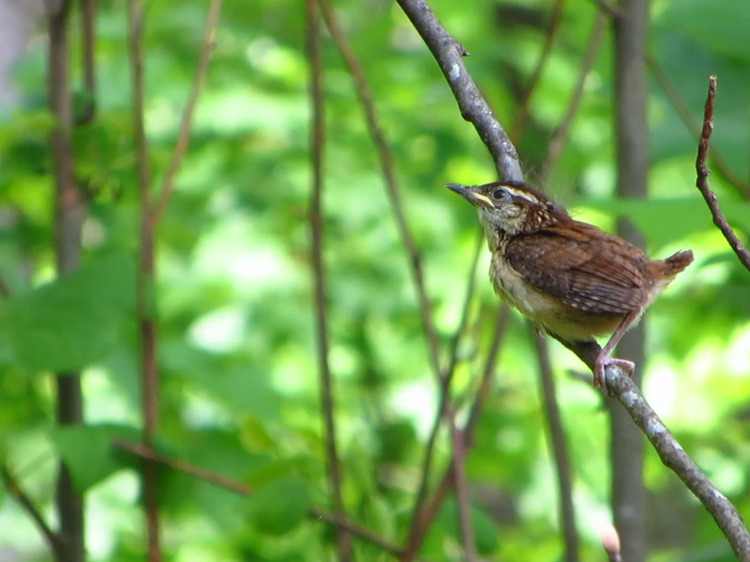Ask a Naturalist: Enjoying Bird Sounds

Photo © Carolina Corona
Our world is filled with different sounds, both of natural and human origin. Among the natural sounds, the ones that birds vocalize are fascinating in that they come in a full range of rich-high to thin-faint. However, as we all have experienced, it is not quite as easy to pinpoint bird sounds partly due to our activities, such as automobiles and airplanes drowning them out. Perhaps the major reason is birds by nature hide in the brushes or perch high up on trees. But if you walk in a quiet place away from cities and roads, you will quickly discover that ambient sounds consist of different layers. And one trick to navigating bird sounds is peeling back those layers and finding the origin of that bird sound that has captivated you.
Spring is the best time to listen to and learn to identify bird songs, whether you are walking by Gateway Nature Preserve or elsewhere. Training your ears for bird songs and calls also has added benefit of discovering more birds, as it is usually difficult to locate birds by sight. Luckily, there are long-established mnemonics to help distinguish different bird sounds that we hear around us. Google Dictionary describes mnemonics as “the study and development of systems for improving and assisting the memory.” Let us discover what bird song mnemonics tell us about birds.
The bird sounds that come first to our attention are probably the familiar “caw caw” of the American Crow, “cheerup, cheerily, cheerily” of the American Robin, “peter, peter, peter” of the Tufted Titmouse and “teakettle teakettle” of the Carolina Wren. Going past this layer will bring you to the “what-cheer, what-cheer, what-cheer” of the Northern Cardinal, “yank-yank” of the White-breasted Nuthatch, and “drink-your-teeee” of the Eastern Towhee. These are our so-called resident birds and could be heard throughout the year.
Recognizing the next layer of sound may need some practicing but frequent outings will help you hear the unmistakable “O Sweet Canada; Canada; Canada” of the White-throated sparrow,” high-pitched “See-see-see-sisi-see” of the Brown Creeper and trilled “bzee zee” of the Cedar Waxwing. These birds are some of the winter visitors in Piedmont and migrate to their breeding grounds as the weather starts to warm up in spring.
The final layer of the sounds consists of high-pitched “tsee” notes of the Golden-winged Kinglet, the melodic jumble of the Ruby-crowned Kinglet and the whiny “speee speee” of the Blue-gray Gnatcatcher. While the Kinglets move up north in summer, the Blue-gray gnatcatcher is a summer visitor in the area. Bird sounds (song & calls) are often more complex than the way that are interpreted here. Therefore, listening closely and creating your own mnemonics can help you navigate their sounds more effectively.
More than 300 species of birds are seen in the area throughout the year. Listing all their songs here is impossible. Below you will find apps and websites to help you learn more about birds and the fascinating sounds they make, among other things.
Useful Resources to Learn More About Birds and their Mnemonics:
- All About Birds by the Cornell Lab of Ornithology
- Mnemonic Bird Songs by South Bay Birders Unlimited
- Audubon Bird Guide App by Audubon
- Merlin Bird ID by the Cornell Lab of Ornithology